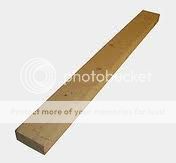I'll admit it was tough getting into Congo at first, which was the fault of our vendor for not providing us the proper training on it.
That said -- I've got a Congo and a Congo Jr. at a school/roadhouse, and everyone loves it. For a short while after the
purchase, we considered trading it in for an
Ion and
ETC was willing to let us do that, but after we compared both consoles, we decided to stick with Congo.
We've also got a couple other high schools and a roadhouse in the area that use Congo-series consoles, and another
venue I'm currently working at is getting ready to give up on their
Light Palette VL and get a Congo. The TD's been banging his head against the wall since he bought up 42
Selador fixtures because the LP VL doesn't
play nicely with movers or with x7 color-mixing. We did side-by-side comparison of the features in the LP VL that weren't working for us with the features in Congo -- everything that was giving us headaches on the VL was "fixed" in Congo.
I taught myself with the built-in training projects (and most importantly, the built-in
visualizer) how to program ML's and mess with things like
dynamic effects. After I got good at programming ML's (even though we didn't have any), my programming for conventionals sped up
a lot.
The best part are the training projects. I can sit a student down who's never touched a lighting
console before in their life and in four hours have them comfortable programming conventionals and moving lights -- did this two weeks ago actually and the student went off to one of the other nearby venues with a Jr. and programmed on it on her own without any problems. Just a few days ago I sat another three students down in front of our Jr., opened a training project, and showed them how to program ML's and effects -- then had them program 45 cues for a 4min rock song. They walked away with an infinitely better understanding both of moving lights as well as of what a good workflow is for programming on any
console (not just Congo).
Experiences vary, but the people growing up on Congo consoles who are being given a proper education on it will only give their consoles up over their dead bodies. I work a group of 6-8 high school programmers who just love the
console to death and haven't had any problems getting used to it.
If not for those training projects, I wouldn't feel comfortable bringing in a rig of ML's for a dance rental next week and having our students program the show, but after poking around in the training projects for four hours, they've got this stuff down and I have the utmost confidence in any of the half-dozen of them that I'll be rotating in and out of the
programmer's seat.
For the pure sake of standardization, I'd say that venues that have lots of groups come in with their own programmers, get an Eos-series
console because more people in the States know it. Situations where the
venue usually supplies the
programmer and usually any group that brings their own
programmer is also bringing their own ML's and lighting
console, get a Congo. Congo is a "
programmer's
desk". An
Eos or an
Ion are a "
venue's
desk" where a given
programmer may only be using the
console for a night or two.



